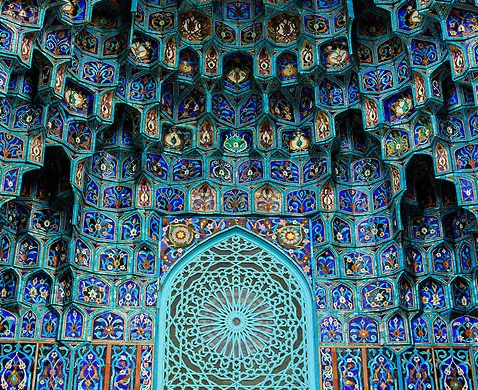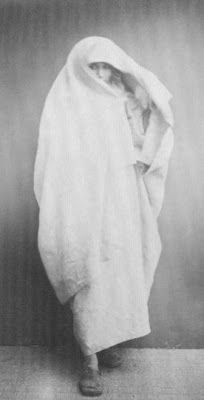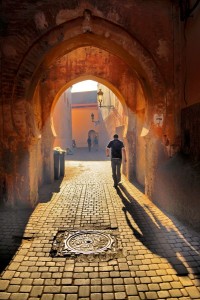Morocco is dripping in color and culture. Muslims, Berbers and Arabs dot the hillsides and winding roads. Cityscapes are flushed in burnt yellows and deep, majorelle blue with a kaleidoscope of tiles. However, this abundance of color is forgone when it comes to the simple, white fabric of Islamic mourning garments that one finds in Morocco.
Traditionally, when an Islamic loved one dies in Morocco, he or she is buried facing Mecca within 24 hours (an act known as qibla). The family foresees the care of the body beforehand in the home, washing it and chanting as it is wrapped in white linen.
“…this abundance of color is forgone when it comes to the simple, white fabric of Islamic mourning garments that one finds in Morocco…”
Protective objects are placed around the grave of the dead, including twigs of myrtle that are believed to please the “angels” with their scent. Mourning in Islam is a famously extensive process; with its various, time-sensitive rituals and rules it seems, in some ways, to not be such a far cry from Western Victorian era mourning behavior. For example, when a woman’s husband dies, his “widow gives a feast forty days after [his] death, which theoretically marks the end of the mourning period. Ideally, it
should also correspond to the obligatory idda, or three-month period between widowhood, or divorce, and remarriage.” White becomes the color of grief, providing a stark contrast with the Western tradition of all-black funeral garments. The color isn’t obligatory, but definitely predominant.
“Protective objects are placed around the grave of the dead, including twigs of myrtle that are believed to please the “angels” with their scent.”
There is something very freeing about the presence of white at Islamic funerals in Morocco. As relative as our associations with color may be, white is arguably the most neutral – the most calm – of the lot. Black, too, has an inherent element of neutrality. But it does not have the same levity as white. The writings of the Prophet Muhammad in the Hadith stress the preciousness of white garments as symbols of cleanliness. Thus, when a loved one has died, it is seems only fitting that he or she be buried in an atmosphere of such purity in the tranquil, dusty Moroccan hills.

 Turn to White: Islamic Funeral Traditions in Morocco
Turn to White: Islamic Funeral Traditions in Morocco





 “As Tears Go By” by Marianne Faithfull
“As Tears Go By” by Marianne Faithfull
 “The Sea” by John Banville
“The Sea” by John Banville
 Funeral Favors Offer Visitors a Tangible Memento
Funeral Favors Offer Visitors a Tangible Memento















